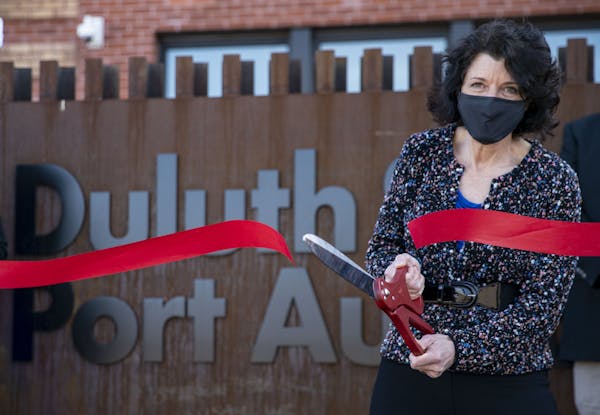DULUTH – The Edgar B. Speer was one of about a dozen Great Lakes cargo ships taken out of service last year as the pandemic sapped the steel industry and demand for the Minnesota-mined iron ore that feeds it.
Now the thousand-foot vessel will be among the first ships to arrive in Two Harbors on Thursday afternoon to fill up on taconite bound for Midwestern steel mills.
"We've seen a huge uptick in demand for raw materials," said Eric Peace, spokesman for the Lake Carriers' Association, which represents U.S. vessels on the Great Lakes. "We're ready and raring to go, and while we can't predict what's going to happen with the economy, things are looking up."
The Great Lakes shipping season kicked off this week with high hopes for a much-improved year following rough waters while the pandemic ravaged the economy. Last season the Port of Duluth-Superior saw its lowest tonnage levels in more than 80 years. With taconite operations now back to full production — the iron ore pellets comprise the majority of shipments out of the port — it should be a busy, or at least normal, year on the waterfront.
"The Iron Range mines are open and active, the nation's blast furnace utilization rate has climbed back to pre-pandemic levels and there's an increasingly healthy demand for steel. All of that bodes well for the Port of Duluth-Superior," said Deb DeLuca, the port's executive director.
Analysts expect Cleveland-Cliffs and U.S. Steel, which own and operate the six active mines on the Iron Range, to turn a profit this year after losses in 2020.
Cliffs CEO Lourenco Goncalves told investors earlier this year that "demand is good. That's the most important thing, demand is fantastic." The company's mines now include Hibbing Taconite and Minorca after the purchase of ArcelorMittal USA last year.
U.S. Steel, which lost $1.17 billion last year, expects to earn $265 million in the first quarter of 2021.
"Solid market fundamentals, low steel supply chain inventories, continued consumer-driven demand, and pent-up infrastructure demand has us increasingly bullish," CEO David Burritt said in a news release this month.
Last year the Port of Duluth-Superior shipped 15.3 million tons of taconite, the lowest level since 2015 and 2016 when mines were idled for an extended period due in part to foreign steel dumping.
The port moved a total of 25.8 million tons of cargo in 2020, the lowest level since 1938.
An increase in grain exports through the Twin Ports was a bright spot, and that trend could continue — depending on a host of global factors.
"If Europeans are getting grain somewhere else or Ukraine has a great crop, that affects us in Duluth," said Stephen Sydow, operations manager with Daniel's Shipping Services. "There are a lot of moving parts when it comes to forecasting shipments. I'd live in one of those houses on top of the hill if I had all the answers."
On Monday the St. Lawrence Seaway opened to international ships, the first of which could arrive in Duluth within a week or so. Last year imports of wind turbine parts set a record, and DeLuca said the "early-season grain outlook appears to be business as usual, which is promising."
Already domestic ships loaded with coal and iron ore have left the port, bound for the Poe Lock on the eastern end of Lake Superior that opened at noon on Wednesday, 12 hours earlier than normal to help the Coast Guard break lingering and free-floating ice
"The ice is moving around, so when it starts shifting in and out of routes it can be more challenging," said Peace with the Lake Carriers' Association.
The U.S. Army Corps of Engineers, which operates the lock, was "able to accommodate an early opening request due to being ahead of schedule and completing all required maintenance tasks during our annual winter season closure," the Corps said in a statement.
The smaller of the two Soo Locks that connect Lake Superior to the lower lakes will remain closed until mid-April. Peace said that could cause congestion depending on how many international ships are headed in and out of Lake Superior early this season.
Work toward a new Poe-sized lock — large enough to fit the ore-carrying lakers — is "looking good," Peace said. Dredging began last year on the $922 million project that is seen as vital for keeping commerce moving on the water should the one gateway connecting Minnesota iron ore to steel mills unexpectedly close.
Brooks Johnson • 218-491-6496
Owner of exploding Michigan building arrested at airport while trying to leave US, authorities say
Surging auto insurance rates squeeze drivers, fuel inflation

